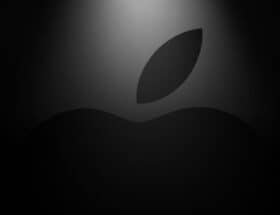By Tim Hardwick
If your iPhone or iPad is full, there are a few things you can do to free up storage space. In this guide, we'll cover a few options and methods available to free up storage on Apple's iOS and iPadOS devices. Keep reading to find out what they are.

Each new iPhone and iPad model comes with storage options ranging from 64GB to 1TB for the iPhone and 64GB to 2TB for the iPad. While it’s always a good idea to buy the model with the most storage you can afford, depending on your usage, sometimes even the largest storage devices can fill up, and it can happen when you least expect it.
From the music you buy and the apps you download to the videos you shoot and the messages you receive, all of that content needs to be stored somewhere, either on your device or in the cloud. When your iPhone or iPad’s storage is full, you can’t increase it. However, you can free up existing storage. Here’s how.
Basic Storage Saving Tips
Apple knows that many people struggle to manage the storage on their devices, so in subsequent versions of iOS, it has introduced more and more tools to help users keep track of the types of apps and media that often eat up precious megabytes.
Launch the Settings app and go to General ➝ iPhone/iPad Storage, and the amount of storage you've used will be displayed in a colored bar at the top. Below that, you can see a list of recommendations for optimizing storage, such as by reviewing and deleting large attachments.
These recommendations are followed by a list of installed apps and how much storage each one is using. The list also tells you when you last used each app, making it easy to find and delete apps you haven't used in a while or at all.
When you delete an app, its icon, app data, and any user data are deleted. This is fine if you don’t plan on using the app again, but Apple also lets you offload apps, which frees up storage space but leaves the app icon and user data in place. If an app you use frequently is taking up a lot of space, it’s worth checking to see if you can clear the cache associated with it.
Another option Apple recently added to iOS/iPadOS is the ability to stop your iPhone or iPad from automatically installing software updates. Previously, new software updates would be downloaded automatically in the background and then installed using the Automatic Updates feature. These days, however, there is a toggle in the Settings app that lets you choose whether to download updates automatically or not.
- How to Delete Unused Apps on iPhone and iPad
- How to Delete Apps on iPhone and iPad
- Prevent iPhone from Automatically Downloading Software Updates
- How to Delete Large Attachments on iPhone and iPad
- How to Clear the Cache on iPhone and iPad
Free up space taken up by photos
The photos you store on your iPhone or iPad naturally take up space on your device, which can fill up quickly depending on the available storage capacity and the amount of content.
If you see a message that your device’s storage is full, it’s worth checking a system option called Optimize Storage, which is designed to work with iCloud Photos. This feature replaces full-resolution photos on your Apple device with smaller versions that take up much less storage space, while the full-resolution images remain off-device in iCloud.
Another way to clean up your photo library is to check for excess photos taken in burst mode. Burst mode means that the camera on your device takes a series of photos in rapid succession at a rate of ten frames per second.
This is a great way to capture an action scene or unexpected event, as you're always more likely to get the shot you were going for. But it also generates a lot of unwanted images, so it's a good idea to pick the best image to keep safe and delete the rest to save space.
If you have an older iPhone, you can also save space by shooting in HDR. On iPhone X and earlier, when the camera takes an automatic HDR photo, it can also optionally save a standard photo in your Photos library, which is useful for comparison or if the HDR image doesn't turn out as expected. However, you can turn this feature off if you want to, saving yourself some space.
In some cases, you may find that your photo library is growing larger even though you haven’t taken any photos on your device. For example, media that people share with you via WhatsApp may be automatically saved to the Photos app on your iPhone. Luckily, you can easily prevent this default behavior by disabling the Save to Photos feature in the WhatsApp app settings.
Of course, if your photo library has become bloated and out of control, one solution is to start over and delete all the photos on your iPhone. Just make sure you've already backed up any photos you want, and remember that deleting photos with iCloud Photo Library enabled will delete your photos from ALL your devices.
- How to Optimize Photos to Take Up Less Space on iPhone and iPad
- How to Delete All Photos from Your iPhone or iPad
- How to Delete Regular Photos When Shooting in HDR
- How to Delete Extra Burst Mode Photos on iPhone and iPad
- Stop WhatsApp Media from Automatically Saving to iPhone Photos
Free Up Space Taken Up by Videos
Some of the photo tips above apply to videos stored in your device's photo library. However, there are other ways to prevent video content from taking up storage space. For example, you can adjust the resolution and frame rate of your recorded video to reduce the file size in Settings ➝ Camera ➝ Record Video.
Elsewhere, if you regularly download Apple Fitness+ videos to your iPhone or iPad, check the recommendations in Settings ➝ General ➝ iPhone Storage, and you should see them listed under View Downloaded Videos, where you can delete them individually or in bulk.
If you have an Apple TV+ subscription or have rented or purchased movies, you can download videos using the Apple TV app to watch them offline. However, if you want to save space, go to Settings ➝ Apps ➝ TV, then under Download Options, make sure you select Fast Downloads — this will reduce the quality of the videos, but they will take up less storage space.
- How to Delete Downloaded Videos on iPhone and iPad
- How to Customize Video Download Settings in the TV App on iPhone and iPad
- How to Save Storage Space When Recording Videos on iPhone and iPad
Free Up Space Taken by Other Apps/Media
WhatsApp has a built-in media management tool that can help you identify, select, and bulk delete GIFs, photos, and videos that may be filling up your phone.
The tool groups large files and media that have been transferred many times, sorts the files by size in descending order and provides the ability to preview the files before deleting them. You can also see a preview of the media before selecting one or more files to delete. To access the storage management tool, launch the app and go to Settings ➝ Storage & Data ➝ Manage Storage.
If you're an Apple Music subscriber, you can download songs, playlists, and albums from the Apple Music catalog to your iPhone or iPad for offline listening, but over time, this can gradually take up space on your device's storage.
Luckily, the Music app includes a handy feature that can kick in when your device is running low on storage space and automatically offload songs you haven't listened to in a while to make room for new ones.
Check Settings ➝ Apps ➝ Music ➝ Optimize Storageand make sure the Optimize Storage toggle is turned on. From here, you can also choose the minimum amount of storage you want to keep for music before downloaded songs start being removed from your device. You can also control storage space by turning off automatic downloads in Settings ➝ Apps ➝ Music and downloading new songs manually when needed.
Of course, Apple Music users can also delete songs and entire albums in the Music app. Just long-press an item, choose Remove from Library from the pop-up menu, and then tap Delete Album/Song when prompted.
There are a few ways to clear out clutter from the Messages app. For example, iOS can be automated to delete old messages that have been on your device for longer than a certain period of time.
Additionally, if you tap on the contact bubbles at the top of a conversation in Messages, you'll also be able to see all the files that were sent to you in the chat in one easy-to-access place, where you can delete them all in one fell swoop.
Other Apple apps worth checking out include the Books app and the Voice Memos app. If you listen to a lot of audiobooks, try deleting old audio files and reviewing old voice memo recordings to see if you still need them.
- How to View and Delete WhatsApp Media
- How to Limit the Space Taken by Apple Music on Your iPhone
- How to Delete Downloaded Apple Music Songs to Free Up Storage
- How to Automatically Delete Old Messages Conversations on iPhone and iPad
- How to Delete Message Attachments on iPhone and iPad
- How to Delete Downloaded Books and Audiobooks from iPhone and iPad
- How to Delete Voice Memo Recordings on iPhone and iPad
Wrapping Up
We've covered the basic tips for saving storage space on iPhone and iPad, but depending on your use case, there may be other ways to free up space on your device. For example, if you do a lot of work with files on your device in the Files app, consider compressing large files and folders by selecting Compress from the contextual pop-up menu.
If you're still low on space and have exhausted all of the above options, you might want to consider performing a “nuke” — a clean install — by wiping your device and starting over. If that doesn't help, it might be time to upgrade your device.
- How to Archive Files and Folders on iPhone and iPad
- How to Erase and Restore Data on iPhone or iPad
Any other tips we haven't mentioned here? Let us know in the comments or send us an email.
50 comments










